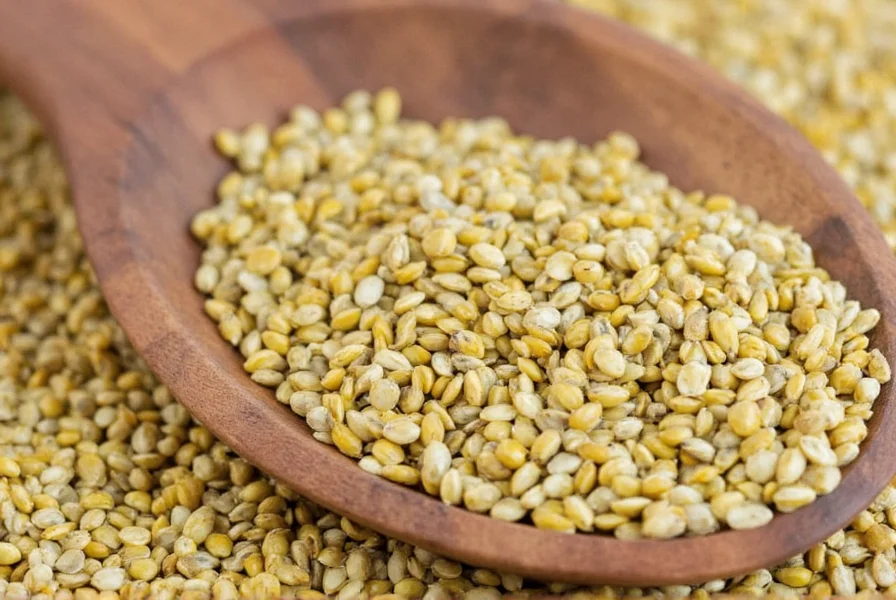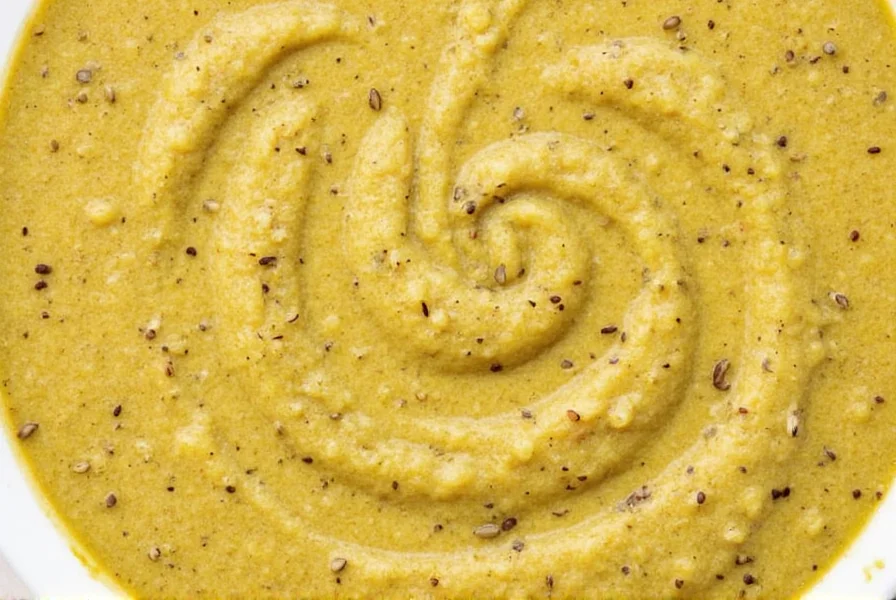For home cooks seeking to elevate their dressing game, mustard seed ranch represents an exciting fusion that bridges two beloved condiment categories. This innovative blend has gained popularity among food enthusiasts who appreciate the depth that mustard seeds bring to the familiar ranch base. The addition of mustard seeds transforms the dressing from a simple creamy accompaniment to a more sophisticated flavor experience with noticeable texture and nuanced taste.
What Makes Mustard Seed Ranch Unique
Mustard seed ranch distinguishes itself from standard ranch dressing through several key characteristics. The most obvious difference is the presence of mustard seeds themselves, which provide both visual interest and textural contrast against the smooth ranch base. These seeds release their distinctive flavor gradually, creating a dressing that evolves on the palate rather than delivering an immediate, sharp mustard punch.
The flavor profile of homemade mustard seed ranch features:
- A balanced tang from both buttermilk and mustard seeds
- Noticeable seed texture that adds dimension
- Complex flavor development as seeds hydrate in the dressing
- Subtle heat that builds gradually rather than hitting immediately
- Enhanced herb and garlic notes that complement the mustard
| Characteristic | Mustard Seed Ranch | Traditional Ranch |
|---|---|---|
| Texture | Visible seeds, slightly grainy | Smooth, uniform |
| Flavor Development | Builds gradually, complex | Immediate, consistent |
| Tang Level | Moderate to high | Mild to moderate |
| Heat Perception | Subtle warmth | None |
| Versatility | Excellent for marinades | Primarily for salads/dips |
Classic Mustard Seed Ranch Recipe
Creating your own mustard seed ranch dressing ensures freshness and allows for customization to your taste preferences. This homemade mustard seed ranch recipe yields approximately 16 ounces of dressing and requires simple ingredients you likely already have in your pantry.
Ingredients
- 1 cup high-quality mayonnaise
- 1/2 cup buttermilk (full-fat for best texture)
- 1/4 cup sour cream
- 2 tablespoons yellow mustard seeds (soaked for 30 minutes)
- 1 tablespoon white wine vinegar
- 1 teaspoon garlic powder
- 1 teaspoon onion powder
- 1 teaspoon fresh dill, finely chopped
- 1/2 teaspoon fresh parsley, finely chopped
- 1/4 teaspoon fresh chives, minced
- 1/4 teaspoon paprika
- Salt and freshly ground black pepper to taste
Preparation Method
- Soak mustard seeds in white wine vinegar for 30 minutes to soften and begin flavor extraction
- In a medium bowl, whisk together mayonnaise, buttermilk, and sour cream until smooth
- Add soaked mustard seeds (with vinegar) to the base mixture
- Gently fold in all herbs and seasonings
- Cover and refrigerate for at least 4 hours (preferably overnight) to allow flavors to meld
- Stir well before serving and adjust seasoning if necessary
Variations for Different Palates
One of the advantages of how to make mustard seed ranch dressing at home is the ability to customize it to your preferences. Consider these popular variations:
- Spicy Mustard Seed Ranch: Add 1/4 teaspoon cayenne pepper or a few dashes of hot sauce
- Herb-Forward Version: Double the fresh dill and add 1 teaspoon of tarragon
- Lemon-Infused: Add 1 tablespoon fresh lemon zest for brightness
- Smoky Variation: Incorporate 1/4 teaspoon smoked paprika
- Lighter Version: Substitute Greek yogurt for half the mayonnaise
Best Uses for Mustard Seed Ranch Dressing
While traditional ranch has its place, mustard seed ranch vs regular ranch offers distinct advantages for certain applications. This versatile dressing shines in multiple culinary contexts:
- Salad Dressing: Particularly excellent on robust greens like kale, arugula, or spinach that can stand up to the stronger flavor
- Sandwich Spread: Adds complexity to turkey, chicken, or roast beef sandwiches
- Dipping Sauce: Perfect for vegetable crudités, french fries, or onion rings
- Marinade Base: The acidity and enzymes in mustard seeds help tenderize proteins
- Burrito Drizzle: Complements Mexican-inspired dishes with its tangy profile
- Potato Salad: Provides a more interesting flavor dimension than standard dressings
Storage and Shelf Life
Proper storage is essential for maintaining the quality of your homemade mustard seed ranch dressing. When stored correctly in an airtight container in the refrigerator:
- Maximum freshness: 7-10 days
- Texture note: Mustard seeds will continue to absorb liquid, becoming more tender over time
- Separation is normal - simply stir before use
- Do not freeze, as this will alter the emulsion and texture
- Always use clean utensils to prevent contamination
For optimal flavor development, many chefs recommend making mustard seed ranch at least 24 hours before planned use. The resting period allows the mustard seeds to fully hydrate and release their flavor compounds into the dressing base.
Troubleshooting Common Issues
When preparing mustard seed ranch, you might encounter these common challenges:
- Too thick: Gradually add additional buttermilk, 1 tablespoon at a time, until desired consistency
- Overpowering mustard flavor: Balance with additional sour cream or a pinch of sugar
- Seeds too hard: Soak seeds longer (up to 2 hours) before incorporating
- Dressing separates: Re-emulsify by whisking vigorously or briefly blending
- Flavor too mild: Allow additional resting time or add more mustard seeds

Frequently Asked Questions
How long do mustard seeds need to soak for optimal ranch dressing?
For the best texture and flavor extraction, soak mustard seeds in vinegar for 30-60 minutes before incorporating them into your ranch dressing. This softens the seeds slightly while allowing them to begin releasing their flavor compounds. Longer soaking (up to 2 hours) creates more tender seeds with a milder mustard flavor, while shorter soaking preserves more texture and delivers a sharper taste.
Can I use dried mustard instead of whole mustard seeds in ranch dressing?
While you can substitute dried mustard for whole seeds, the texture and flavor profile will differ significantly. Use 1 teaspoon of dried mustard powder for every tablespoon of whole seeds, but recognize that you'll lose the distinctive seed texture that defines mustard seed ranch. For closest approximation, combine 1 teaspoon dried mustard with 1 teaspoon whole seeds to maintain some texture while boosting flavor.
What's the difference between using yellow versus brown mustard seeds in ranch dressing?
Yellow mustard seeds provide a milder, more traditional mustard flavor that blends smoothly with ranch's herb profile. Brown mustard seeds offer a more pungent, complex flavor with subtle heat that creates a bolder dressing. For most mustard seed ranch recipes, yellow seeds are preferred for their balanced flavor, though some chefs blend both varieties for complexity. Brown seeds also tend to remain more noticeable in texture after soaking.
How can I make mustard seed ranch dressing without buttermilk?
To create buttermilk-free mustard seed ranch, substitute 1 cup of plain yogurt thinned with 2-3 tablespoons of milk. Alternatively, make a dairy-free version using 3/4 cup silken tofu blended with 1/4 cup unsweetened plant-based milk and 1 tablespoon lemon juice. The key is maintaining the proper tang and creamy consistency that defines ranch dressing while accommodating dietary restrictions.
Why does my homemade mustard seed ranch separate after refrigeration?
Separation occurs when the emulsion breaks, which is common in homemade dressings without stabilizers. This happens because the fat in mayonnaise and the liquid components naturally want to separate. Simply stir vigorously or briefly blend to re-emulsify. To prevent separation, ensure your base ingredients are at room temperature before mixing, and consider adding 1/4 teaspoon xanthan gum as a natural stabilizer for longer shelf stability.











 浙公网安备
33010002000092号
浙公网安备
33010002000092号 浙B2-20120091-4
浙B2-20120091-4